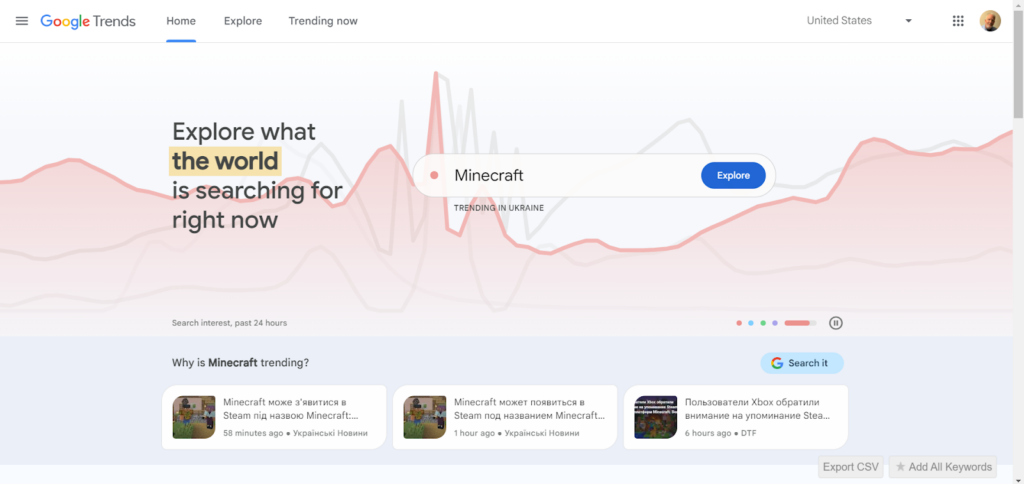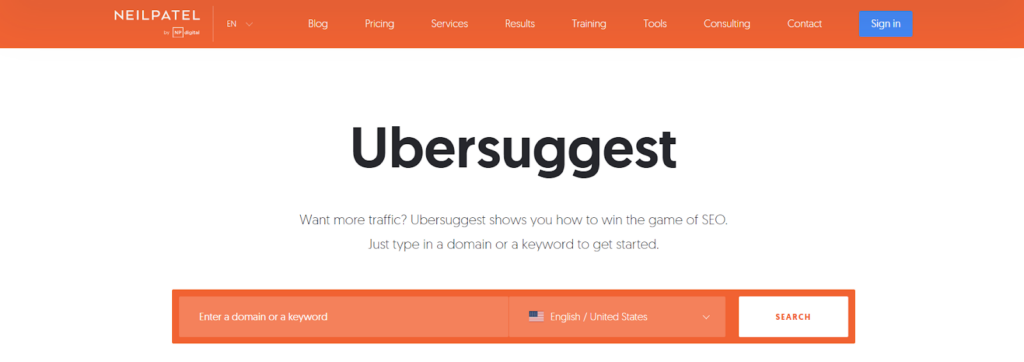What is Keyword Research?
Why is Keyword Research important?
1. What is your audience searching for?
2. Which keywords are your competitors ranking for?
3. Which keywords have higher traffic?
Keyword Research: Steps
Understand Seed Keywords
- What do you want to rank for?
- What are your current rankings?
- What are your competitors’ rankings?
The Google Search Console can be a good start to extract the seed terms, and it’s pretty handy. The great thing about seed keywords is that they can help you build a list of keywords that can be used as a reference point for creating more relevant content, which can ultimately rank you higher.
Build the Perfect Keyword List
- Consider your target audience.
- Choose keywords that are relevant to your target audience.
- Select broad keywords to reach a larger audience.
So, when trying to curate the perfect list of keywords, make sure that it is relevant and can help your current and potential customers locate you. In addition, you can always alter, remove, and add keywords as needed until you find something that works.
Keyword Research: Prioritizing Keywords
On a personal note, we always ask ourselves which term will capture the most profit and then utilize the keyword metrics to figure it out. It is essential to keep these factors in mind while selecting your keywords.
1. Relevance
2. Volume per month
3. Keyword difficulty
4. Organic click-through rate (CTR)
5. Priority
Keyword Research: On-Page Optimization
If you want to rank higher on search engines, you need to figure out what your audience is looking for and what they expect to see. This knowledge gives you the insight to decide which keywords to utilize and develop only relevant content.
Keyword Research: Tracking Keyword Rankings
Because of personalization, localization, and dynamic competitive environments, tracking and ranking keywords for your website are no longer synonymous. Google Rank Checker, for example, allows you to watch the position of keywords in search engine results and is extremely precise. It can also help you learn how to organize the Keywords based on their ranking.
TOOL SELECTION FOR KEYWORDS
Here are some top tools that you must try.

- Start by verifying your website ownership and then submitting an XML sitemap. GSC’s Performance report helps track your website’s performance, identifying top-performing pages and keywords, while the Search Results report shows queries that lead users to your site.
- Now, for keyword research, use the query data to identify existing keywords your pages rank for and focus your optimization efforts on them.
- If you want to maximize the use of GSC, we suggest connecting it with tools like Semrush and Moz for personalized keyword research. These tools reveal new keyword clusters and their search volumes.
- GSC offers a plethora of reports, including those on index coverage and structured data, that provide insights into your site’s performance. We have used these for years to identify high-ranking but low-CTR pages and optimize their metadata, as well as underperforming pages to improve or discard.
- Additionally, we often use GSC to track backlinks, optimize internal links, and inspect individual URLs for indexing issues. You can regularly measure your site’s search performance and manage your crawl budget by removing low-traffic pages to enhance overall SEO efforts.
1. Verify Website Ownership:
We begin by logging into Google Search Console and adding our website. We then verify ownership by adding a DNS record or uploading an HTML file to our site.
2. Submit XML Sitemap:
Next, we navigate to the “Sitemaps” section and submit our website’s XML sitemap. This helps Google index our pages more effectively.
3. Access the Performance Report:
Subsequently, we click the “Performance” tab to open the Performance report. This report shows clicks, impressions, average CTR, and average position for our website.
4. Analyze Top-Performing Pages:
In the Performance report, we switch to the “Pages” tab to see which pages drive the most traffic. This helps us identify content that is performing well.
5. Review Search Queries:
We then switch to the “Queries” tab to see the search terms that users are using to find our website. This data provides insights into which keywords our site is already ranking for.
6. Identify Keyword Opportunities:
We look for keywords with high impressions but low clicks (low CTR). These keywords indicate that our pages appear in search results but do not attract clicks, which may be due to unappealing meta descriptions or titles.
7. Optimize Existing Content:
We focus on improving the content and metadata for pages that rank for valuable keywords. We enhance the page titles, meta descriptions, and on-page content to target these keywords better.
8. Track Backlinks and Internal Links:
We use the “Links” report to monitor backlinks and internal links. This helps us identify linking opportunities and ensure high-value pages receive enough internal link juice.
9. Inspect URLs:
We use the “Links” report to monitor backlinks and internal links. This helps us identify linking opportunities and ensure high-value pages receive enough internal link juice.
10. Integrate with Other Tools:
We connect Google Search Console with tools like SEMrush or Moz for more detailed keyword research and to discover new keyword clusters and their search volumes.
11. Monitor Index Coverage and Structured Data:
We regularly review the “Coverage” report to identify and fix indexing errors. We also check the “Enhancements” report for issues related to structured data, mobile usability, etc.
12. Manage Crawl Budget:
We optimize our crawl budget by removing or improving low-traffic pages. This ensures that Google focuses on crawling our most valuable content.
13. Continuous Performance Tracking:
We regularly check our website’s performance metrics in GSC to stay updated on its search performance and make data-driven decisions for ongoing SEO improvements.

1. Access Google Trends:
2. Search for a Keyword::
3. Analyze Interest Over Time:
4. Explore Interest by Region:
5. Related Topics and Queries:
6. Compare Keywords:
7. Download Data:

1. Access Ubersuggest:
2. Enter a Keyword:
3. Review Keyword Overview:
4. Keyword Ideas:
5. Content Ideas:

1. Access Ahrefs Free Keyword Generator:
Visit Ahrefs Free Keyword Generator.
2. Enter a Keyword:
We then enter our keyword into the search bar and choose our target search engine (Google, Bing, YouTube, or Amazon). Then, we click “Find keywords.”
3. Review Keyword Suggestions:
We analyze the list of suggested keywords, along with their search volume and keyword difficulty score.
4. View Related Questions:
We then scroll down to see questions related to our keyword, which might be useful for content ideas.
5. Save and Export Keywords:
We finally save/copy the list of relevant keywords for further use in our SEO strategy.

1. Access SEMrush Keyword Magic Tool:
We log into our SEMrush account and navigate to the Keyword Magic Tool under the “SEO” section.
2. Enter a Keyword:
We type our keyword into the search bar and click “Search”.
3. Analyze Keyword Suggestions:
We then review the list of suggested keywords, paying attention to metrics such as search volume, keyword difficulty, CPC, and competitive density.
4. Use Filters:
We proceed to apply filters to refine the list based on criteria such as search volume, keyword difficulty, and more.
5. Group Keywords:
We usually also utilize the “Group” feature to organize keywords into thematic clusters.
6. Export Keywords:
We then export the list of selected keywords for further analysis or campaign creation by clicking the “Export” button.
7. Analyze SERP Features:
We finally skim through the SERP features to understand how the keyword appears in search results and identify opportunities to optimize for specific features.

1. Access Keyword Planner:
2. Discover New Keywords:
3. Get Search Volume and Forecasts:
4. Review Keyword Suggestions:
5. Filter and Refine Keywords:
6. Save Keywords:
7. Download Keyword Data:
CONCLUSION
Have something more to add? Or did we miss anything? Let us know in the comments below.

